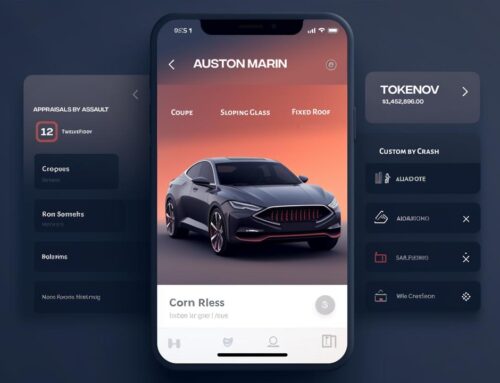How to Optimize Website Speed to Improve User Experience and Search Engine Visibility
Website loading speed has become a critical factor in ensuring a positive user experience and improving search engine visibility. A fast-loading website not only keeps users engaged but also ranks better on search engine results pages (SERPs). In this article, we will explore various techniques to optimize your website’s loading speed to improve user experience and search engine visibility.
1. Evaluate Your Website’s Current Performance
Before you can optimize your website’s loading speed, you need to understand your website’s current performance. There are several tools available that can help you analyze and measure your website’s speed:
1.1 Google PageSpeed Insights
- Google’s PageSpeed Insights tool provides insights on the loading speed of your website’s pages and suggestions for improvement.
- It measures performance for both mobile and desktop devices.
1.2 GTmetrix
- GTmetrix is another popular tool that analyzes your website’s speed and provides a detailed report on performance issues and recommendations.
1.3 Pingdom Website Speed Test
- Pingdom offers a website speed test tool that provides information about your website’s loading time, performance grade, and more.
2. Optimize Your Website’s Images
Images are often the largest files on a website, and optimizing them can significantly improve your website’s loading speed.
2.1 Compress Images
- Use image compression tools like TinyPNG or ImageOptim to reduce the file size of your images without losing quality.
2.2 Choose the Right File Format
- Use the appropriate file format for each image:
- JPEG for photographs and complex images
- PNG for images that require transparency or have text
- SVG for icons and simple graphics
2.3 Use Responsive Images
- Implement responsive images using the
srcsetattribute to serve different image sizes based on the user’s device.
3. Minify HTML, CSS, and JavaScript Files
Minification is the process of removing unnecessary characters and whitespace from your code files to reduce their size and improve loading speed.
3.1 Minify HTML
- Use tools like HTMLMinifier to minify your HTML files.
3.2 Minify CSS
- Optimize your CSS files using tools like CSSNano or CleanCSS.
3.3 Minify JavaScript
- Use JavaScript minification tools like UglifyJS or Terser to reduce the size of your JavaScript files.
4. Implement Browser Caching
Browser caching allows your website’s static files to be stored in the user’s browser cache, reducing the number of requests to the server and improving loading speed.
4.1 Leverage Browser Caching
- Configure your server to include appropriate cache headers (like
Cache-ControlandETag) for different file types.
4.2 Use a Content Delivery Network (CDN)
- A CDN caches your website’s static files on a network of servers around the world, delivering them from the server closest to the user.
5. Optimize Your Website’s Code
Optimizing your website’s code can have a significant impact on loading speed.
5.1 Optimize CSS
- Remove unused CSS rules and combine media queries.
- Use CSS preprocessors like Sass or LESS for better organization and maintainability.
5.2 Optimize JavaScript
- Defer the loading of non-critical JavaScript files using the
deferattribute. - Minimize the use of JavaScript libraries and plugins, and consider using vanilla JavaScript when possible.
5.3 Reduce HTTP Requests
- Combine CSS and JavaScript files to reduce the number of HTTP requests made by the browser.
- Use CSS sprites to combine multiple images into one, reducing the number of image requests.
6. Enable Compression
Enabling compression reduces the size of your website’s files, making them faster to download and improving loading speed.
6.1 Use Gzip Compression
- Enable Gzip compression on your server to compress HTML, CSS, and JavaScript files before they are sent to the browser.
6.2 Use Brotli Compression
- Brotli is a newer compression algorithm that can provide better compression ratios than Gzip, especially for text-based files. Consider enabling Brotli compression on your server if it’s supported.
7. Optimize Server Response Time
Improving server response time can significantly impact your website’s loading speed.
7.1 Choose a High-Performance Web Host
- Select a reliable and high-performance web hosting provider to ensure fast server response times.
7.2 Use a Content Delivery Network (CDN)
- As mentioned earlier, a CDN can improve server response time by delivering static files from the server closest to the user.
7.3 Optimize Database Performance
- Regularly optimize your website’s database to remove overhead and ensure efficient database queries.
8. Implement Lazy Loading
Lazy loading is a technique that defers the loading of non-critical content until it is needed, improving the initial loading speed of your website.
8.1 Lazy Load Images
- Implement lazy loading for images using JavaScript libraries like lazysizes or by using the
loadingattribute with the valuelazyon your image tags.
8.2 Lazy Load Videos and iFrames
- Use lazy loading for embedded videos and iFrames to delay loading until they are scrolled into view.
9. Use Accelerated Mobile Pages (AMP)
Accelerated Mobile Pages (AMP) is an open-source framework developed by Google to improve mobile web browsing speed.
9.1 Implement AMP
- Convert your website’s pages to AMP format to provide a faster-loading version for mobile users.
9.2 Validate AMP Pages
- Ensure your AMP pages are valid and error-free using the AMP Validator tool.
10. Monitor and Continuously Improve
Optimizing your website’s loading speed is an ongoing process. Regularly monitor your website’s performance and make adjustments as needed to ensure a fast and smooth user experience.
10.1 Monitor Performance Metrics
- Use tools like Google Analytics and Google Search Console to track performance metrics and identify potential issues.
10.2 Perform Regular Audits
- Regularly perform website audits using tools like Google PageSpeed Insights, GTmetrix, and Pingdom to identify areas for improvement.
Takeaways, optimizing your website’s loading speed is crucial for both user experience and search engine visibility. By implementing the techniques discussed in this article, you can significantly improve your website’s performance, leading to higher user engagement and better search engine rankings.
10 most important SEO practices we need to do today.










